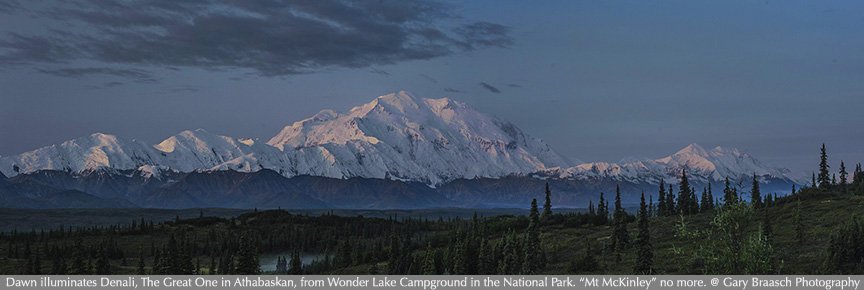Obama Administration proposes to fully protect much of Arctic National Wildlife Refuge, including rich coastal plain which oil drillers covet.
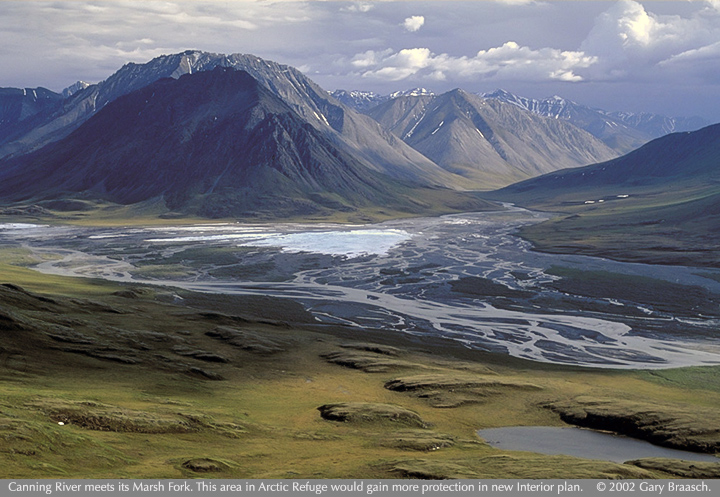
President Obama has proposed that the coastal plain of the Arctic National Wildlife Refuge (ANWR) and large areas of the refuge to the south be protected as Wilderness. Wilderness designation is the strongest protection from development, roadbuilding and mineral extraction available under law, and must be conferred by Congress. The coastal plain along the Arctic Ocean is rich with wildlife including migratory birds and polar bears, but also is known to have petroleum deposits similar to Prudhoe Bay to the west. It has been under contention for decades since the Refuge was first declared by President Eisenhower.
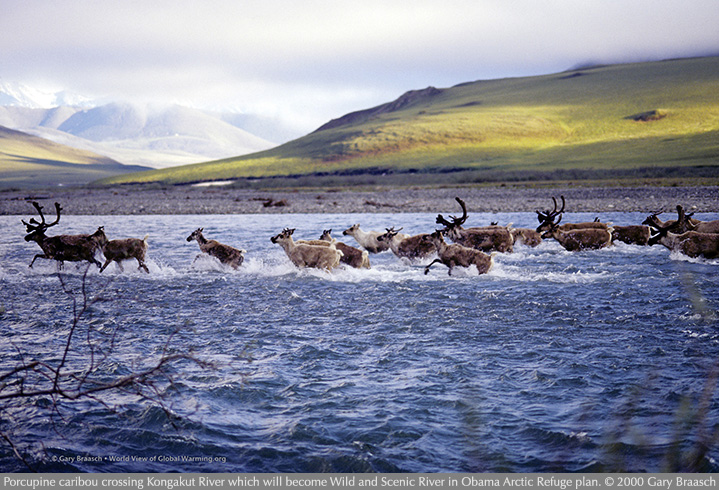
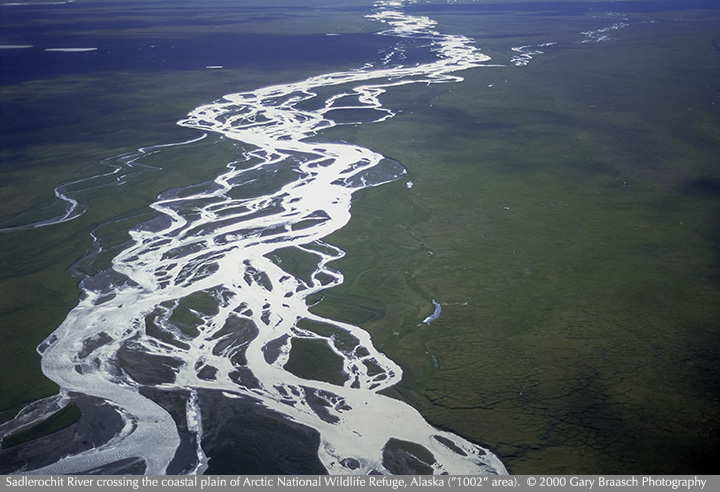
When a swath of the Refuge in the Brooks Range Mountains and Arctic coast was proposed for Wilderness designation in 1980 (hatch marks in map below), petroleum interests persuaded Congress to leave out the western coast of the Refuge — that area, called the 1002 from the section of the bill passed by Congress, was removed from the full protection and only administratively restricted from oil drilling. Since then oil interests their Congressional supporters have often tried to open the 1002, but each time Congress voted to continue restrictions. Members of the Alaska Congressional delegation and others immediately decried the Obama proposal and the idea may be doomed in the Republican-controlled Congress. Any official proposal for Wilderness designation carries a strong mandate not to violate the land while the proposal is being written and submitted to Congress.
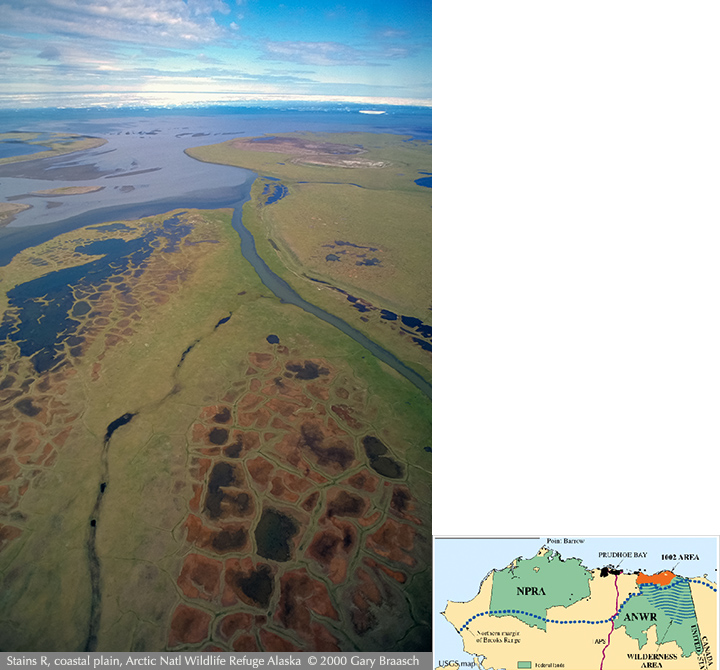
Juliet Eilperin of the Washington Post, who first broke the story, wrote on January 26 that the Interior Department was also ready to "put part of the Arctic Ocean off limits to drilling as part of a five-year [oil drilling area] leasing plan it will issue this week and is considering whether to impose additional limits on oil and gas production in parts of the National Petroleum Reserve-Alaska,” (NPRA) in the NW part of Alaska’s north slope. These areas include subsistence whaling and sealing areas and habitat areas for walrus and other Arctic creatures. (see map below). At the same time the President would open parts of the Atlantic and Gulf off-shore areas to oil exploitation.
The almost 20 million acre Arctic National Wildlife Refuge is home to the most diverse wildlife in the arctic, including caribou, polar bears, gray wolves, and muskoxen. More than 60 percent of the refuge, including huge sections of mountains and forests south of the Brooks Range, is not official Wilderness even though it is very wild land, among the most pristine and sublime in the nation. More than 200 species of birds, 37 land mammal species, eight marine mammal species and 42 species of fish are found in the Refuge. The proposal to add the land to the National Wilderness Preservation System, announced January 25, 2015, will also ask that four rivers – the Atigun, Hulahula, Kongakut, and Marsh Fork Canning – be added to the National Wild and Scenic Rivers System by Congress.
Gary Braasch has spent weeks photographing and exploring the Arctic Refuge since 1983, including the coastal plain and Canning River. His photographs of the Shell oil rig Kulluk very near the coastal plain made news in 2012 and some photographs appeared on the cover of the NY Times Magazine in January 2015.
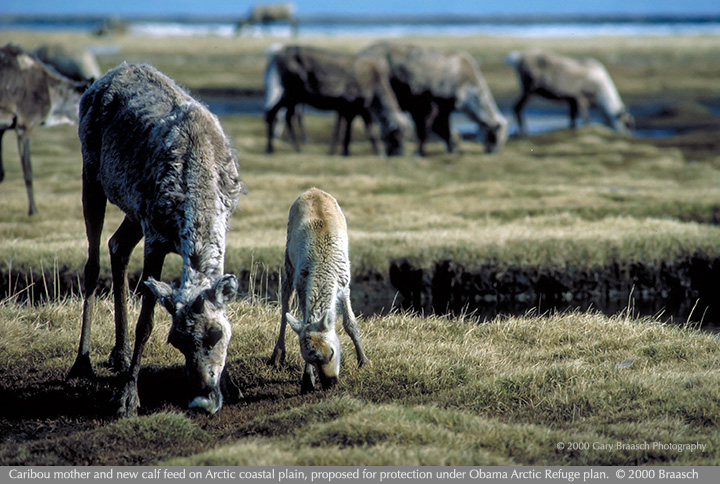
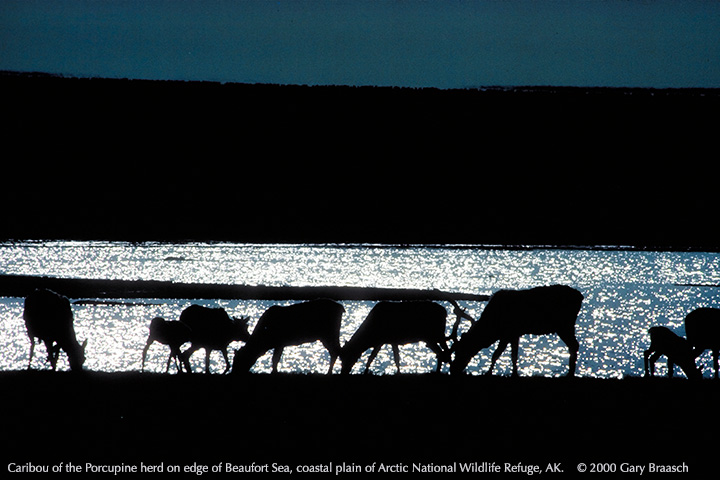
Alaska’s Mount McKinley, long ago named for the 25th President even before he was elected, was officially renamed Denali by President Obama and Interior Secretary Sally Jewell on August 31, 2015. Even though the native Athabaskan name meaning The Great One or High One had been adopted for the surrounding National Park and Preserve, native Alaskans have been lobbying to change the mountain’s name for years. Changing the name of this great peak, highest in North America, immediately ran into Republican opposition — especially from McKinley’s native Ohio — with claims that only Congress can rename it. For the 2015 Pacific walrus haul out in Alaska, please see World View of Global Warming.
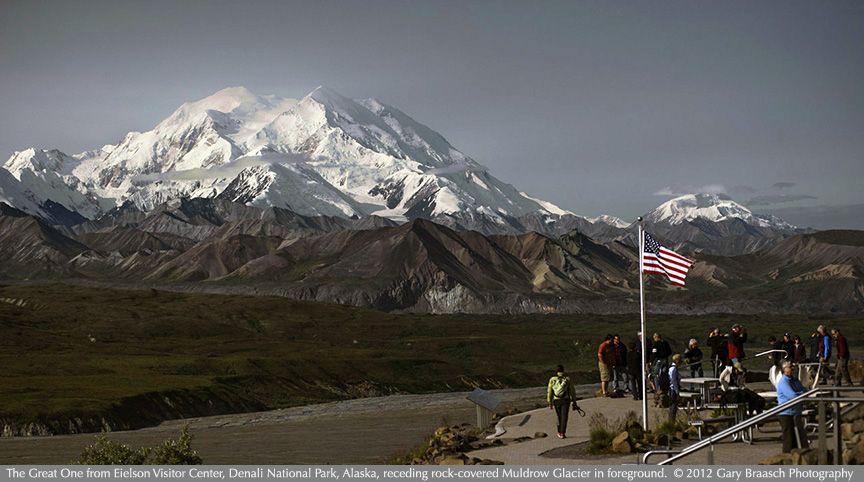
Gary Braasch is a leading environmental photojournalist who creates remarkable images and reports about nature, environment, biodiversity and global warming around the world. More...

